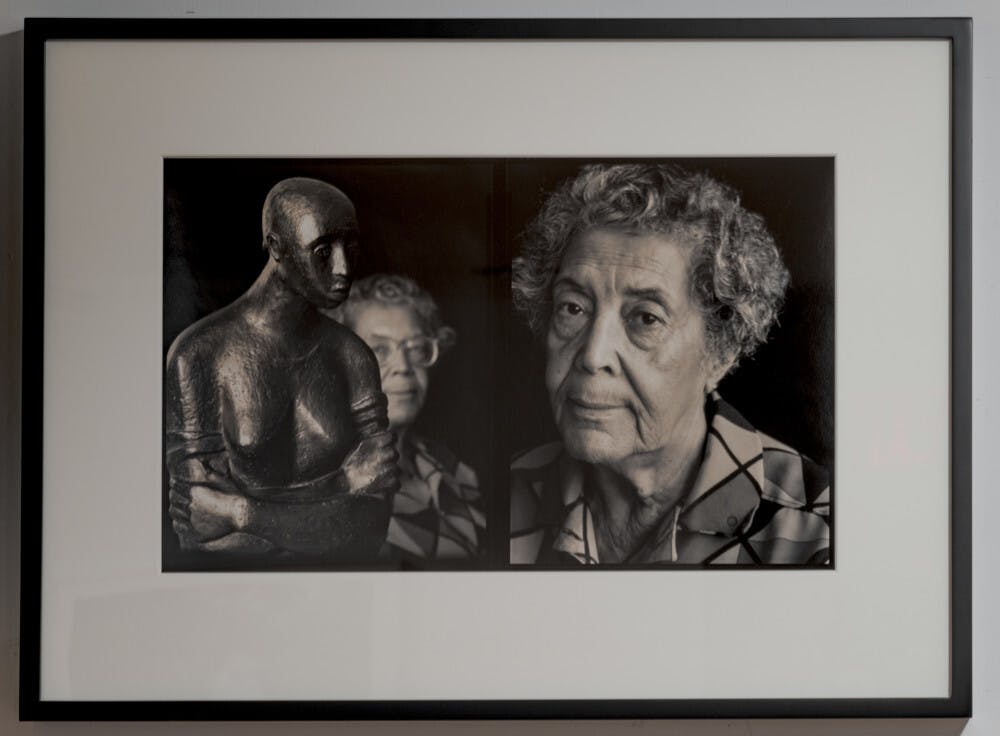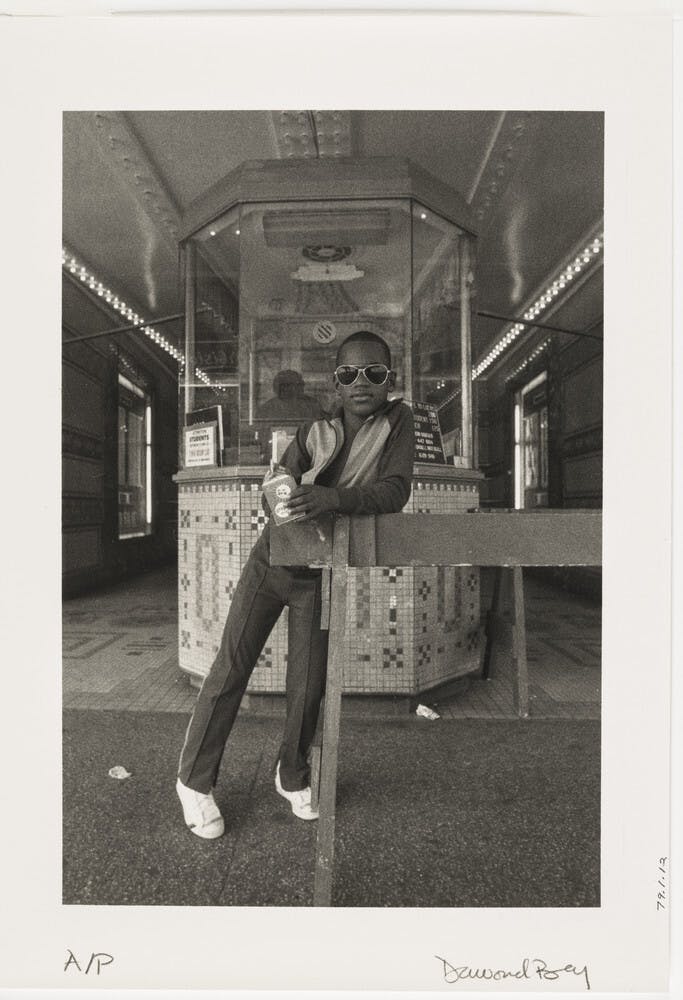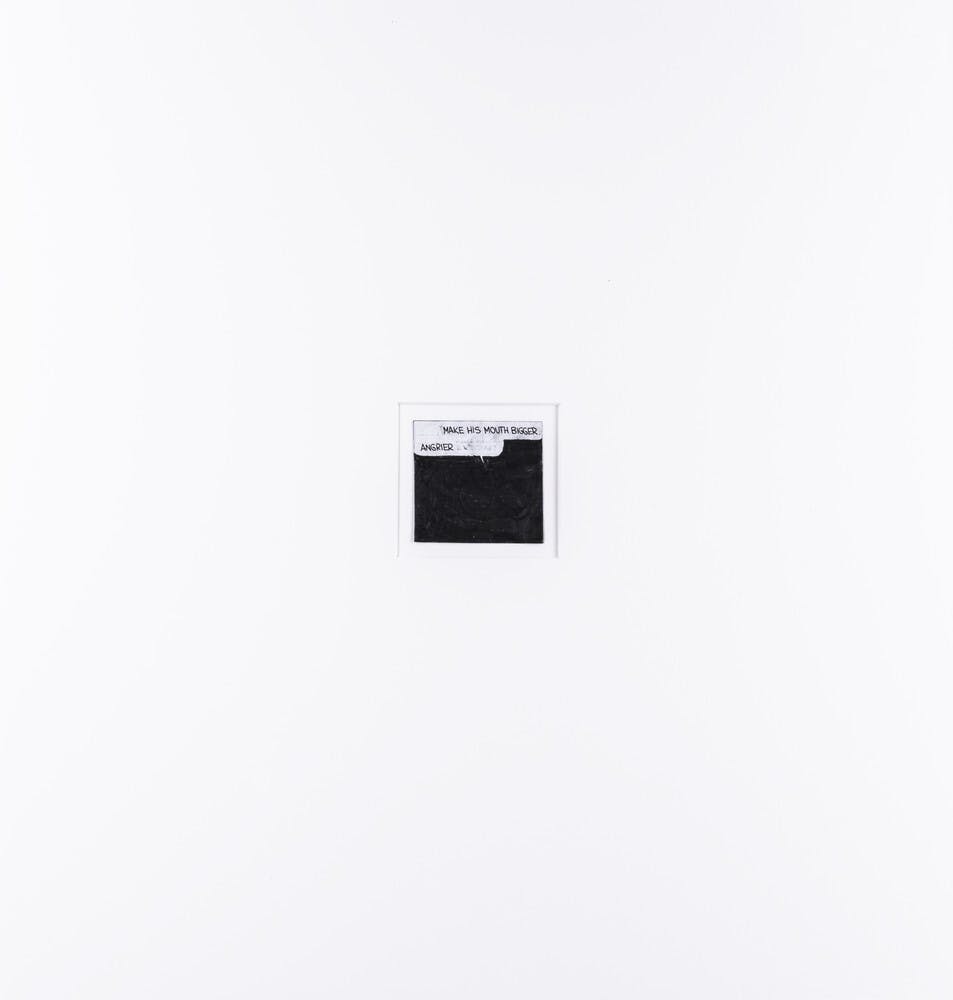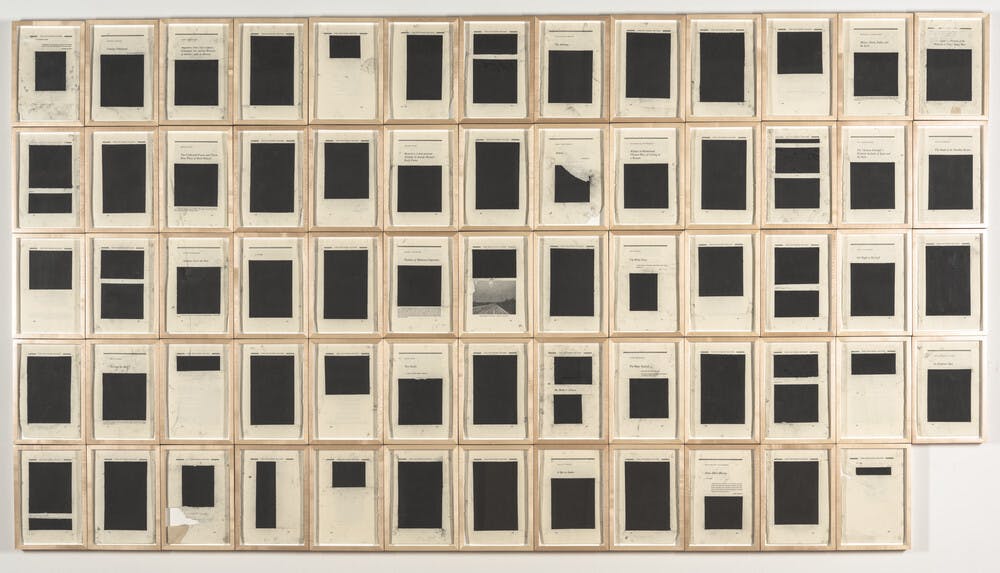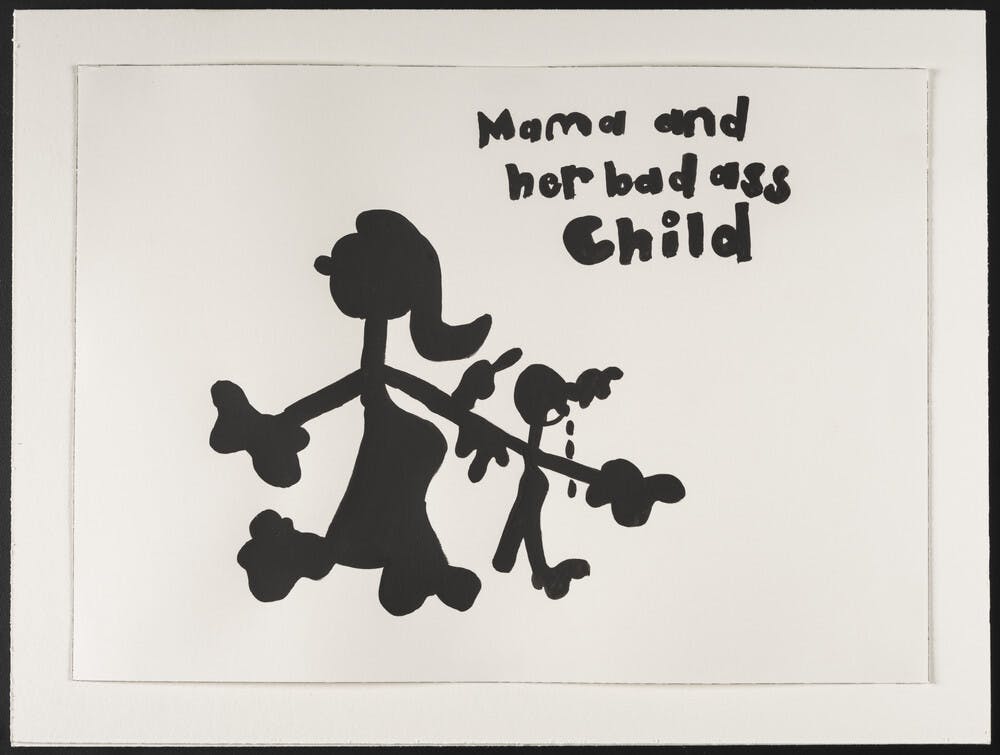Refusal
These works celebrate the right to refuse; to contradict; to say no; to be disorderly, unmanageable, and unruly. They focus on the artist as troublemaker and look to refusal as a generative and deeply creative process.
Refusal was organized by Jordan Jones, former Studio Museum/MoMA Joint Curatorial Fellow.
What is refusal?
Elizabeth Catlett’s Homage to the Panthers (1970) sets the scene as a reminder of the long legacy of refusal and protest at the core of Black radical movements. The Black Panthers’ Ten-Point Program centered on the liberation of Black folks embodies this spirit.
Refusal can also exist at the individual level, expressed through the body.
In Dawoud Bey’s A Boy in Front of the Loews 125th Street Movie Theater (1976), refusal turns a barricade into a prop for the studied pose of a boy in dark glasses and fresh white sneakers.
Refusal can speak with a quiet intensity,
capturing our attention by making us lean in closer. In this way, Bethany Collins and Tony Lewis offer up redaction as a means of refusal, replacing text with thick, black boxes that defy legibility and bring new contexts and connotations to their source material.
And in Adrian Piper’s Self-Portrait as a Nice White Lady (1995), refusal is defiant, and sounds like, “What choo lookin at, mofo?”
Kalup Linzy’s Untitled (3 of 3) (2005) brings home the idea of refusal. To be mama’s badass child is a distinguished position. The honor comes from living between the two meanings of badass: to be big trouble, and to be truly remarkable.
Refusal was organized by Jordan Jones, former Studio Museum/MoMA Joint Curatorial Fellow.
